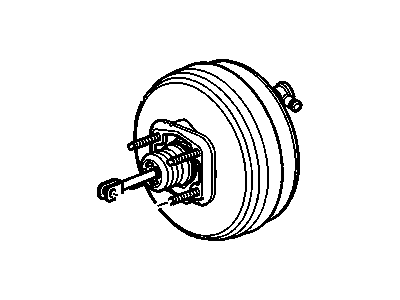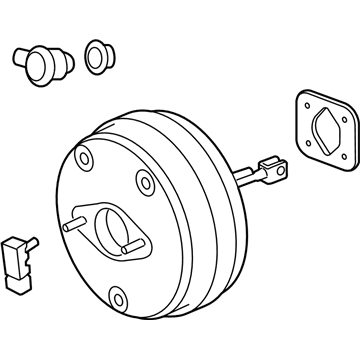
My Garage
My Account
Cart
Genuine Saturn Outlook Brake Booster
Brake Power Booster- Select Vehicle by Model
- Select Vehicle by VIN
Select Vehicle by Model
orMake
Model
Year
Select Vehicle by VIN
For the most accurate results, select vehicle by your VIN (Vehicle Identification Number).
2 Brake Boosters found
Saturn Outlook Booster Assembly, P/B
Part Number: 84635614$128.85 MSRP: $234.28You Save: $105.43 (45%)Ships in 1-2 Business DaysSaturn Outlook BOOSTER ASM,P/B
Part Number: 19432799$499.92 MSRP: $966.02You Save: $466.10 (49%)Ships in 1-2 Business Days
Saturn Outlook Brake Booster
Each OEM Saturn Outlook Brake Booster we offer is competitively priced and comes with the assurance of the manufacturer's warranty for the part. Furthermore, we guarantee the speedy delivery of your orders right to your doorstep. Our hassle-free return policy is also in place for your peace of mind.
Saturn Outlook Brake Booster Parts Questions & Experts Answers
- Q: How to perform an operating check on the brake system and remove/install the Brake Booster on Saturn Outlook?A:To perform an operating check on the brake system, start by depressing the brake pedal multiple times with the engine off to ensure there is no change in the pedal reserve distance. Then, depress the pedal and start the engine, noting if the pedal goes down slightly, indicating normal operation. For an air tightness check, start the engine and turn it off after a minute or two. Slowly depress the brake pedal several times, observing if the pedal goes down farther the first time but gradually rises after subsequent depressions, indicating an airtight booster. Additionally, depress the brake pedal while the engine is running and then stop the engine with the pedal depressed. If there is no change in the pedal reserve travel after holding the pedal for 30 seconds, the booster is airtight. If a problem arises, it is recommended to have a new or factory-rebuilt unit installed, as disassembly of the power unit requires special tools and is not typically performed by home mechanics. To remove the power unit, set the parking brake on a level surface and deplete any remaining vacuum in the booster by pumping the brake pedal with the ignition switch off. Then, remove the air filter housing assembly, disconnect the electrical connector at the brake fluid level sensor, and disconnect the vacuum hose and the booster. Release the Brake Lines from the retaining clip and lift the Brake Pressure Modulator Valve (BPMV) assembly slightly forward. Without disconnecting the brake lines, remove the two mounting nuts and position the master cylinder to the side. Under the dash, remove the driver's side instrument panel insulator cover and knee bolster, and disconnect the pushrod from the brake pedal by removing the retaining clip and clevis pin. Remove the intermediate steering shaft and the booster mounting nuts from inside. Carefully lift the booster upward to clear the mounting studs and remove it from the engine compartment. To install, reverse the removal steps, ensuring the gasket seal between the booster and dash panel is inspected and replaced if necessary, and that the O-ring is properly positioned on the master cylinder sleeve. Finally, test the operation of the brakes before returning the vehicle to normal service.




